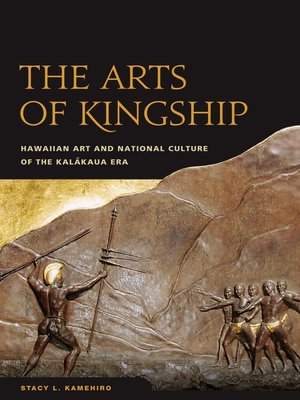The Arts of Kingship
ebook ∣ Hawaiian Art and National Culture of the Kalakaua Era
By Stacy L. Kamehiro

Sign up to save your library
With an OverDrive account, you can save your favorite libraries for at-a-glance information about availability. Find out more about OverDrive accounts.
Find this title in Libby, the library reading app by OverDrive.



Search for a digital library with this title
Title found at these libraries:
| Loading... |
The Arts of Kingship offers a sustained and detailed account of Hawaiian public art and architecture during the reign of David Kalakaua, the nativist and cosmopolitan ruler of the Hawaiian Kingdom from 1874 to 1891. Stacy Kamehiro provides visual and historical analysis of Kalakaua's coronation and regalia, the King Kamehameha Statue, 'Iolani Palace, and the Hawaiian National Museum, drawing them together in a common historical, political, and cultural frame. Each articulated Hawaiian national identities and navigated the turbulence of colonialism in distinctive ways and has endured as a key cultural symbol.
These cultural projects were part of the monarchy's concerted effort to promote a national culture in the face of colonial pressures, internal political divisions, and declining social conditions for Native Hawaiians, which, in combination, posed serious threats to the survival of the nation. The Kalakaua leadership endorsed images that boosted international relations and appeased foreign agitators in the kingdom while addressing indigenous political cleavages. Kamehiro interprets the images, spaces, and institutions as articulations of the complex cultural entanglements and creative engagement with international communities that occur with prolonged colonial contact. Nineteenth-century Hawaiian sovereigns celebrated Native tradition, history, and modernity by intertwining indigenous conceptions of superior chiefly leadership with the apparati and symbols of Asian, American, and European rule. The resulting symbolic forms speak to cultural intersections and historical processes, claims about distinctiveness and commonality, and the power of objects, institutions, and public display to create meaning and enable action.
The Arts of Kingship pursues questions regarding the nature of cultural exchange, how precolonial visual culture engaged and shaped colonial contexts, and how colonial art informs postcolonial visualities and identities. It will be welcomed by readers with a general and scholarly interest in Hawaiian history and art. As it contributes to discussions about colonial cultures, nationalism, and globalization, this interdisciplinary work will appeal to art and architectural historians as well as those studying Pacific history, cultural and museum studies, and anthropology.






